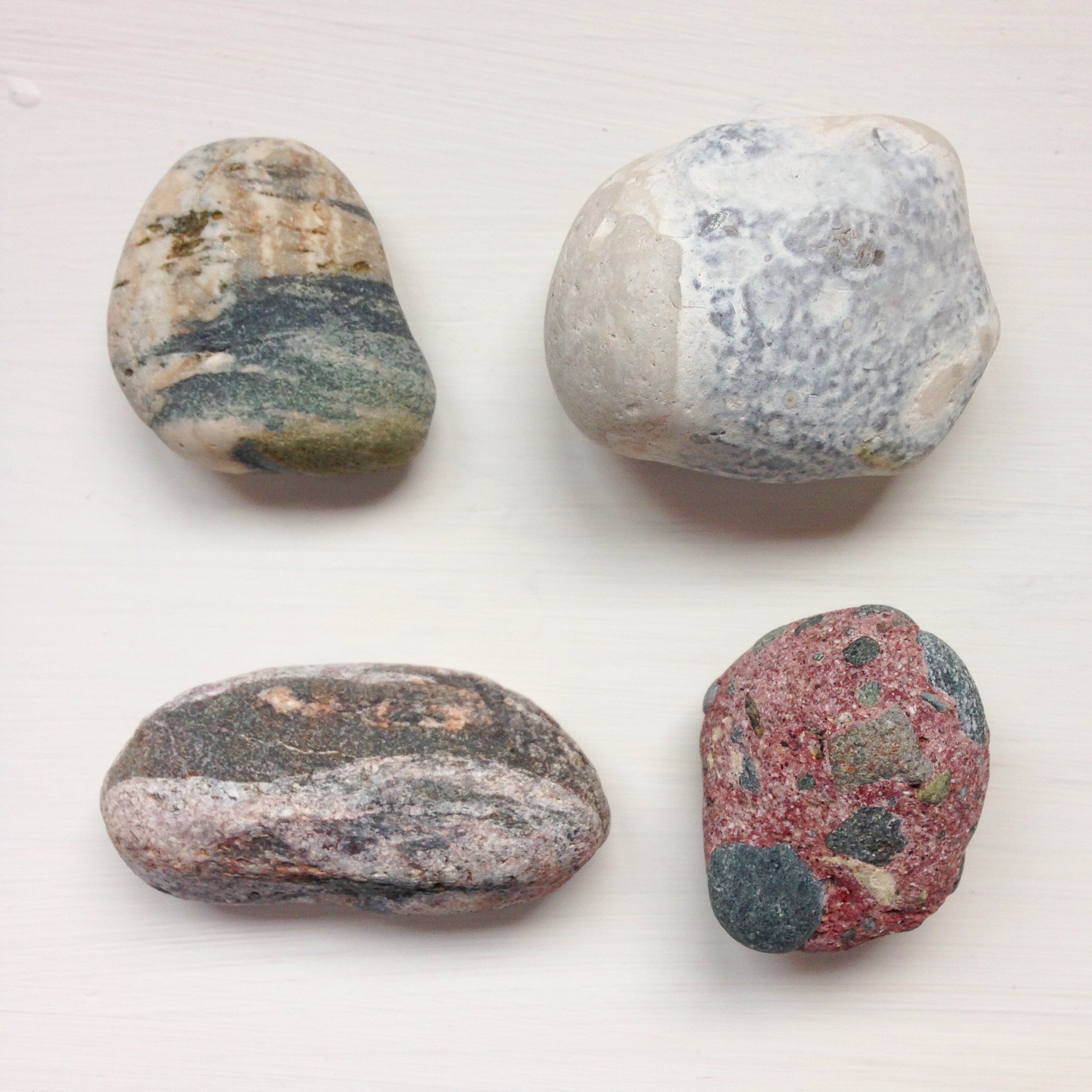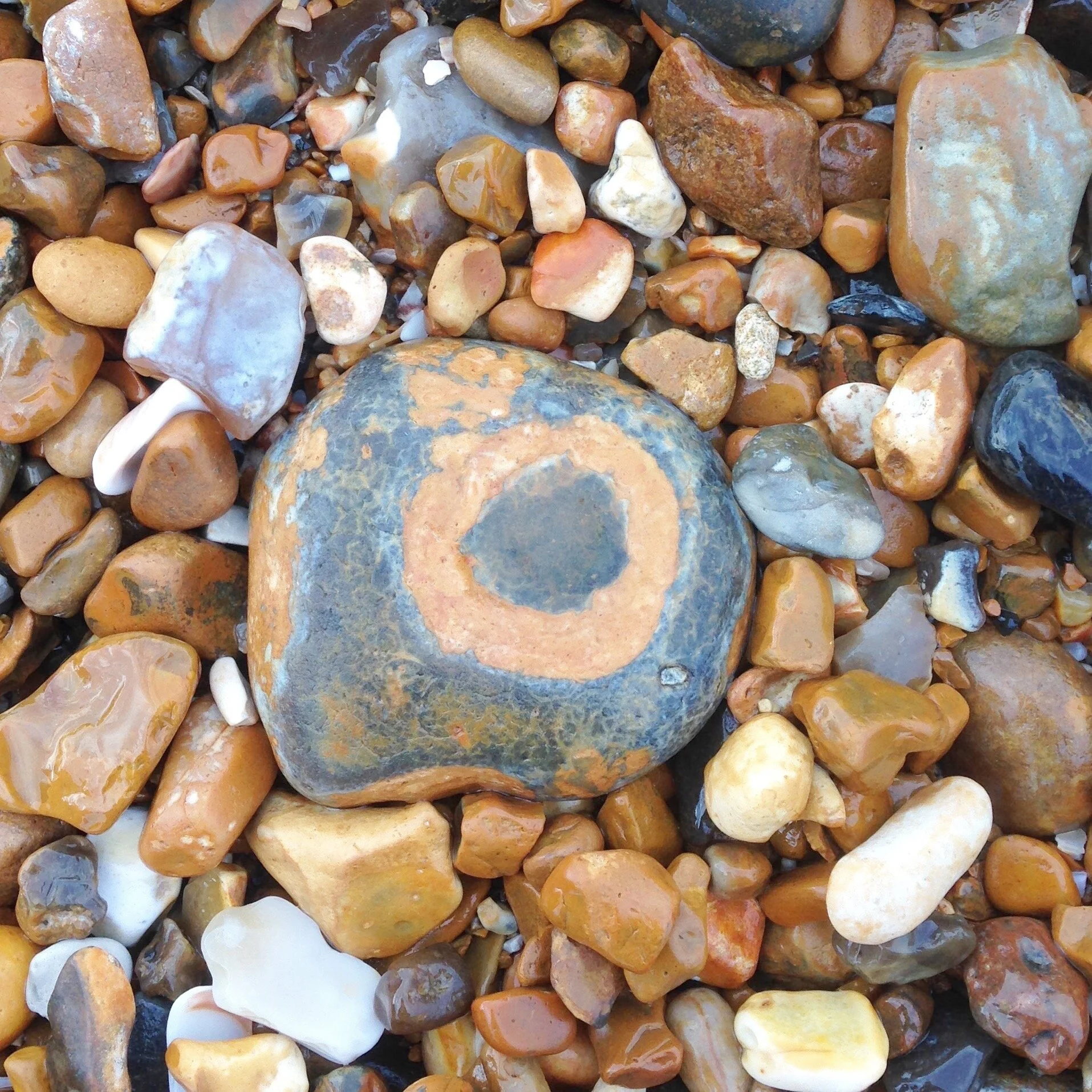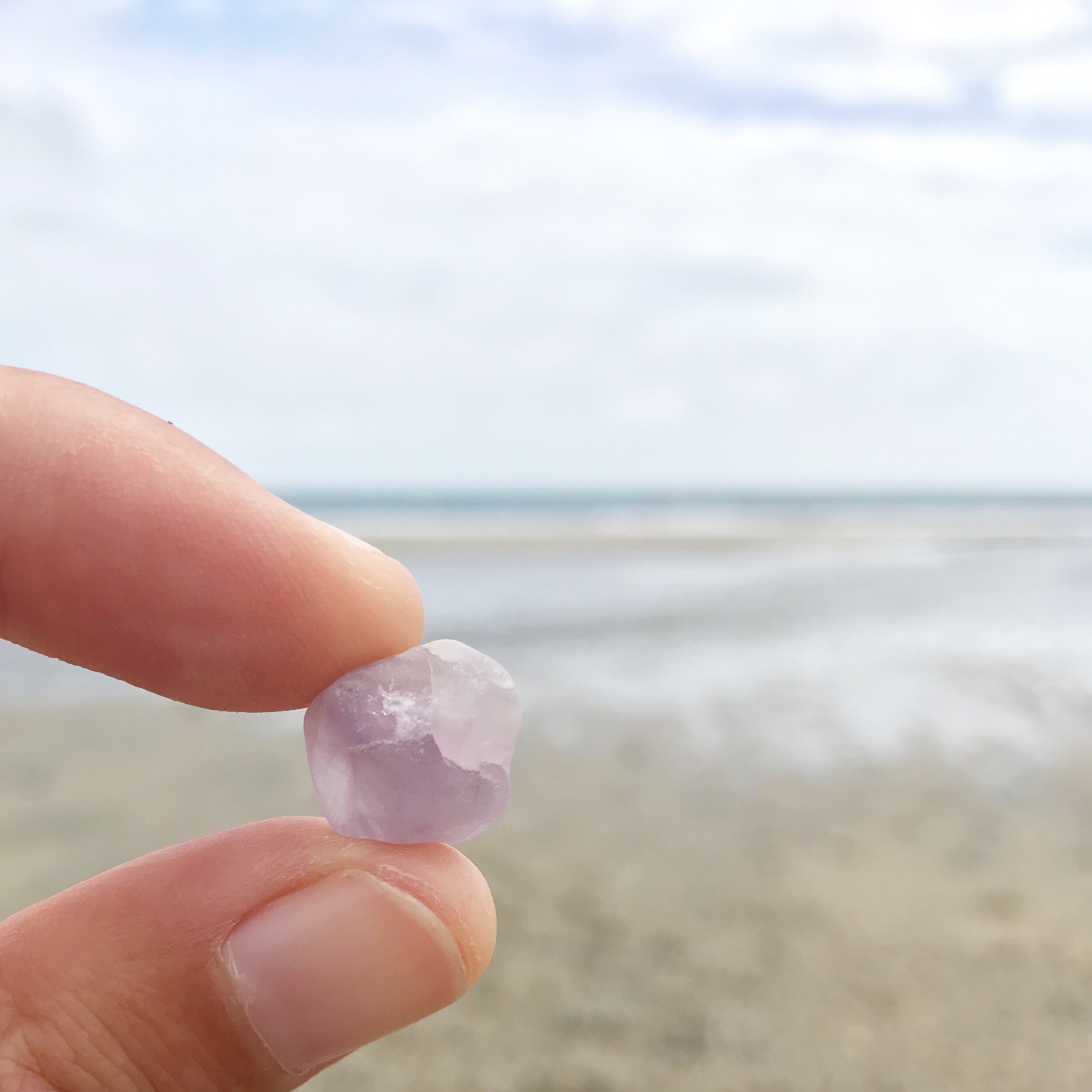Journal: Rock, stone or pebble?
The innocuous beach stone, or pebble, is almost always found on our shorelines. Yet it is probably of least interest to beachcombers, rather like its plastic counterpart, by virtue of them showing little merit or worth.
Primrose coloured flecked quartz
I grew up in Cornwall, where I enjoyed beachcombing for popular treasure like shell, sea glass & pottery, driftwood and maybe some amethyst if I was lucky. Brighton beach, where I now live, is a completely different landscape. Sand is scarce and usually only becomes apparent at low tide. The rest of the beach is covered in big, uncomfortable pebbles, or rocks, as I like to call them.
I have recently started collecting pebbles and using them in my work. I’ve always subconsciously picked them up. It started off with them slowly creeping in, and then I noticed myself going out of my way to search for them. My favourite ones to find are usually just ones that look a bit different or have an interesting pattern. If I want to make jewellery from it, it must be quite flat, more like a disk. This makes it easier to wire wrap rather than a sphere or egg shape.
A collection of beach finds, stones, fossils, sea glass and sea pottery
The more I repurposed my pebbles, rather than them gathering dust on a shelf or nook somewhere, the more I sought them out and started wondering about their origins, what they came from, what they are. Sometimes its very easy, for example when I was on Mount Etna in Sicily, the black light rocks I found there were identifiable as cooled lava because of where I was and what I knew had happened there. Other times, its very cryptic.
Firstly, what is the difference between a pebble, stone or rock? Although there is no definitive scale for classification, it’s generally perceived that a stone or a pebble is usually quite small, something you could pick up and deposit in your pocket. Whereas a rock is seen as somewhat larger, and more cumbersome to move. If someone threw a pebble at you, it would probably hurt, but if someone threw a rock at you, it would surely cause more substantial injury.
Cornish rocks
Brighton beach rock
Both stones and rock are made from the same material. Rock is a material found on the earths crust, and is present both below and above the ground. Rocks are made of hard or soft mineral substances and stone. Rocks can be both hard and soft.
Stone is a non metallic mineral and can only be hard. It occurs when rock has been excavated either naturally or by man. So again, this fits the theory that it is considered smaller than rock.
Rocks are made of stone. And stones are made from rocks. And a stone (or pebble) is a rock. As a general rule, geologists perceive all stones and pebbles as rocks, but not all rocks are considered stones (or pebbles). A pebble is a small stone that has had its edges smoothed by water erosion. And sand is just tiny pieces of eroded rock.
The small rounded salmon pink stones above are intact seaworn local brick
nail varnish on quartz, maybe someone topping up their talons on the beach and spilt a bit!
There are manmade materials made of reconstituted rock and / or stone that look suspiciously like pebbles. Cement, concrete, brick and even ceramics are considered to be rocks created by us. I found lots of pink pebbles in Sicily that a local identified as a typical style of regional brick used to build most of the houses.
And then you have semi precious and precious stones. The names itself can sometimes be misleading, for example a garnet is relatively common and semi precious, whereas tsavorite, a green garnet, can fetch more than an emerald (precious).
A gemstone is mineral crystal, usually in cut or polished form, although raw formats are growing increasingly fashionable. Precious stones are diamond, ruby, sapphire and emerald. All others are semi-precious. In Cornwall I have found amethyst, serpentine and quartz. Bodmin Moor has deposits of beryl, topaz, cairngorm and tourmaline.
beach tumbled amethyst - cornwall
Some rocks like lapis lazuri, opal and jade are considered semi precious, even though they are not crystal. Other organic non minerals like jet, pearl and amber are not rocks or crystal but also considered semi-precious.
Brighton Beach was actually a popular destination for the Victorians who enjoyed pebble collecting and seaweed pressing as pastimes as more people vacationed at seaside resorts. Apparently semi precious gems would litter the beach, and be squirreled away for the cabinet of curiosities, or faceted and cut into gemstones to be set as jewellery.
Shell, raw amethyst, pink faceted sea glass.
So what gemstones can you expect to find in the UK…In the West Country expect to find quartz, topaz, tourmaline, beryl, fluorite and amethyst. Whitby is famous for its Jet. Amber can be found in Suffolk and Yorkshire, Cornelian is found at Cornelian Bay.
Scotland seems to be the most abundant. North of Dundee you can find a popular agate site. And apparently the Isle of Harris in Scotland has sapphires. It may also be the place to search for diamonds! In the 1870s Professor M. F. Heddle found a small diamond about 4.5km north of Ben Hope in Scotland. A discovery of diamond indicator minerals in Ireland shows this may be another location for finding a true beach gem.
Goodbye, until next time…







